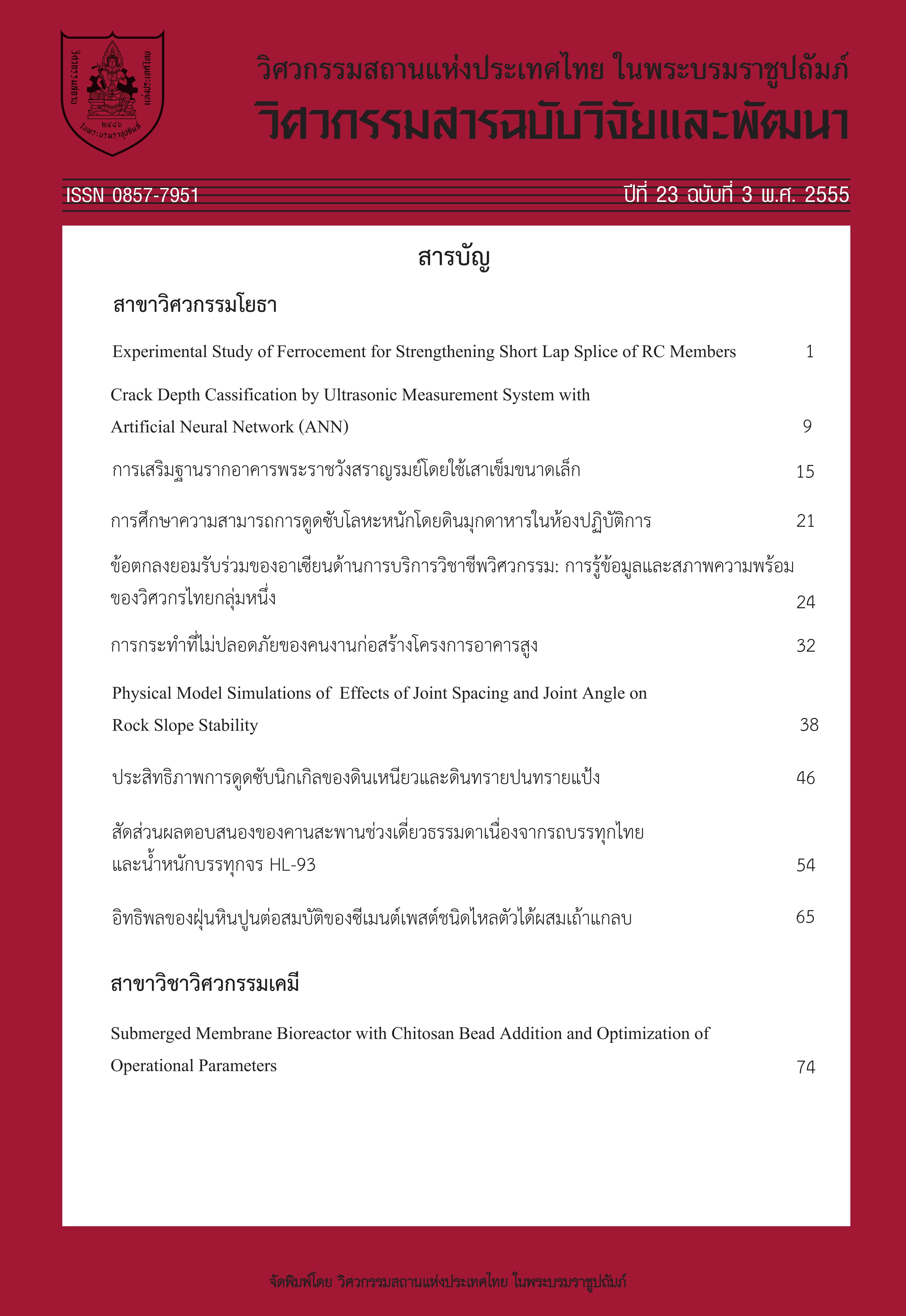Physical model simulations of effects of joint spacing and joint angle on rock slope stability
Main Article Content
Abstract
Abstract
Scaled-down physical models are used to simulate slope failure formed by jointed rock mass. The test results are compared with those obtained from the Hoek and Bray’s solution, simplified Bishop method and UDEC simulations. A vertical test frame is used to induce slope failure under real gravitational force in two-dimension. Rectangular and parallelepiped blocks of sandstone are saw cut to obtain nominal sizes of 4´4´8 cm, 4´4´12 cm, and 4´4´16 cm to assess the effects of joint spacing and joint angle. The heights of the slope models vary from 0.1 to 1 m and the slope face angles from 14° to 55°. Results indicate that plane sliding occurs when the slopes are gentle and low with large joint spacing while combination of circular and plane sliding modes is obtained when the slopes are steep and high with small joint spacing. The maximum slope height also decreases as the sliding plane angle and slope face angle increase. The slope models with joint dipping into the slope face tend to be less stable than those with the joint dipping away from the slope face. The simulation results well agree with those of the UDEC analyses. Both Hoek and Bray and simplified Bishop solutions however overestimate the stability of the slope models for all joint conditions.
Article Details
The published articles are copyright of the Engineering Journal of Research and Development, The Engineering Institute of Thailand Under H.M. The King's Patronage (EIT).


